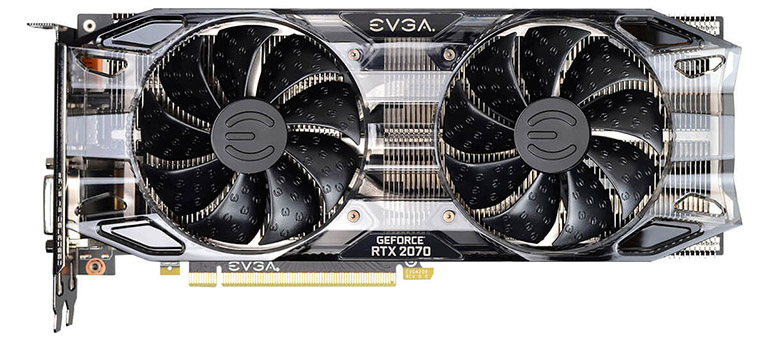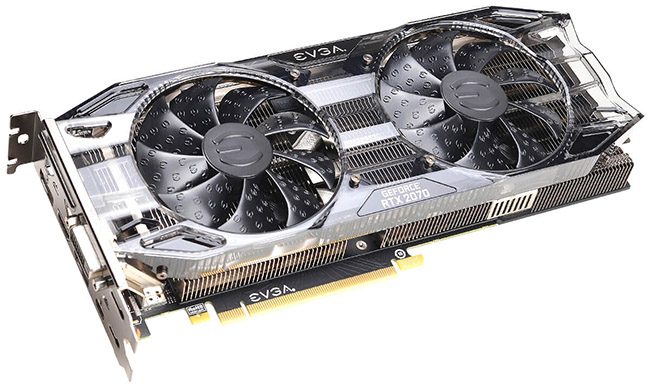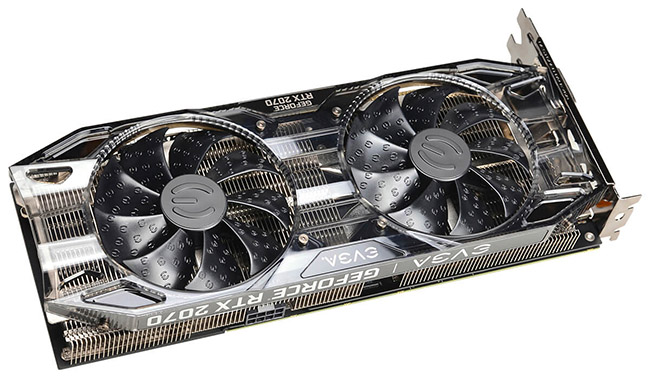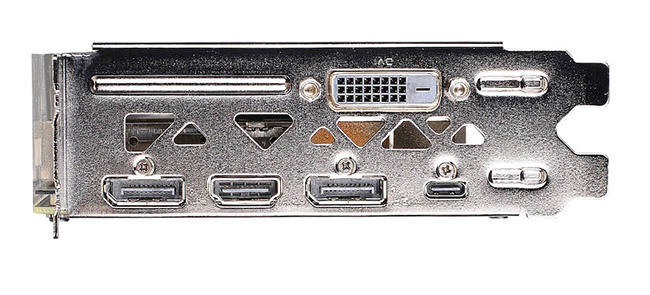EVGA RTX 2070 Black Gaming
And here is that $499 (£459) Black Gaming. Doesn't look much different on first glance, does it? But there are manifest differences worth talking about.
The first is that the cooler uses a dual-slot heatsink whose fins are noticeably shorter, about half the size, compared to the XC Ultra Gaming. The twin heatsinks are connected via three, not five, heatpipes, and the location of the cooling is slightly different, even though the overall card measures the same in length.
What's not clearly obvious is that EVGA deviates from the reference board by introducing a shortened PCB. It measures less than 200mm long and finishes at the silver-coloured extender/holding bracket you see near the right-hand side. Its sole purpose is to enable the overhanging heatsink to be securely fastened to the PCB.
It's telling that EVGA sees miniaturisation potential in the RTX 2070. 175W, after all, isn't hard to cool with today's advanced heatsinks, and we hope to see enterprising AIBs bring Mini-ITX RTX 2070 cards to market.
Having a smaller PCB means the single 8-pin power port is located nearer the middle of the heatsink. We'd normally be concerned that such a heatsink overhang may impede cooling performance - because so many of the hot-running components are located on the right-hand side - but as you will see later on, this is not the case.
Like all other EVGA cards, the twin fans, which are identical to the XC Ultra Gaming, turn off at medium load. However, there have been clear cuts to keep to the £459 price point. The EVGA branding and card name is not backlit at all - not even in white - so colour-obsessed aficionados need to look elsewhere. The card is also substantially lighter, coming in at 765g vs. 1,265g for the XC Ultra Gaming.
Part of this weight reduction comes from the simpler heatsink design, though further weight is shaved off by having a shorter PCB and no backplate. This is EVGA's way of introducing its latest cooler with the minimum cost.
Outputs are identical to the Founders Edition board, that is, dual DisplayPort, HDMI, USB Type-C, and DVI.
Like all RTX 2070 GPUs, this one does not feature the NVLink connector that would ordinarily enable two-way SLI. Nvidia sees little merit in it for sub-£500 GPUs, suggesting that multi-GPU will become even more niche.
Backed by three-year warranties, it is going to be interesting to see how two quite different EVGA cards stack up against each other and also against a healthy competition roster. Let's now find out.













